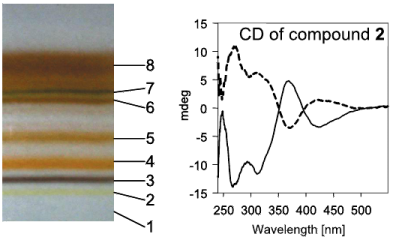-
Size Exclusion Chromatography for Semi-Preparative Scale Separation of Au38(SR)24 and Au40(SR)24 and larger clusters
S. Knoppe, J. Boudon, I. Dolamic, A. Dass and T. Bürgi
Analytical Chemistry, 83 (13) (2011), p5056-5061


DOI:10.1021/ac200789v | unige:16756 | Abstract | Article HTML | Article PDF

Size Exclusion Chromatography (SEC) on a semi-preparative scale (10 mg and more) was used to size-select ultrasmall gold nanoclusters (< 2 nm) from polydisperse mixtures. In particular, the ubiquitous byproducts of the etching process towards Au38(SR)24 (SR: thiolate) clusters were separated and gained in high monodispersity (based on mass spectrometry). The isolated fractions were characterized by UV/Vis spectroscopy, MALDI mass spectrometry and electron microscopy. Most notably, the separation of Au38(SR)24 and Au40(SR)24 clusters is demonstrated.

